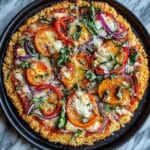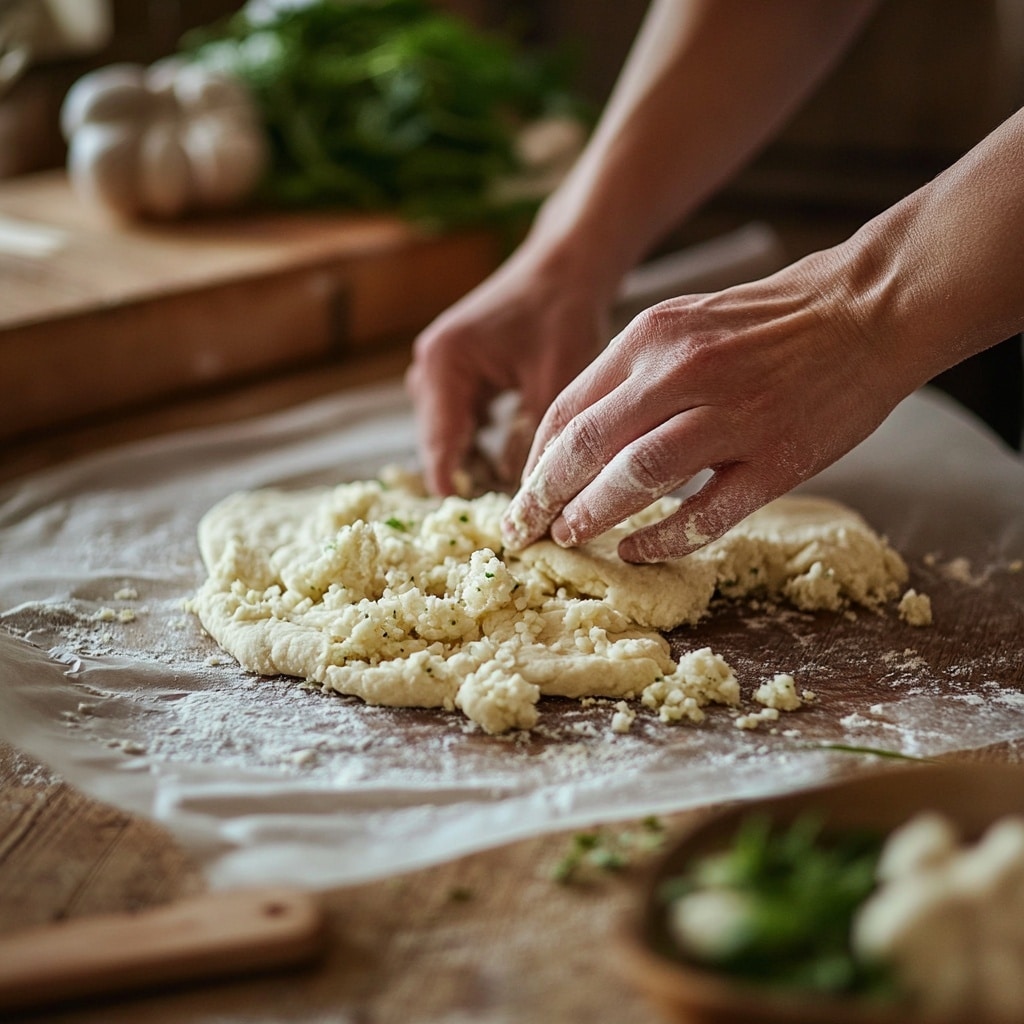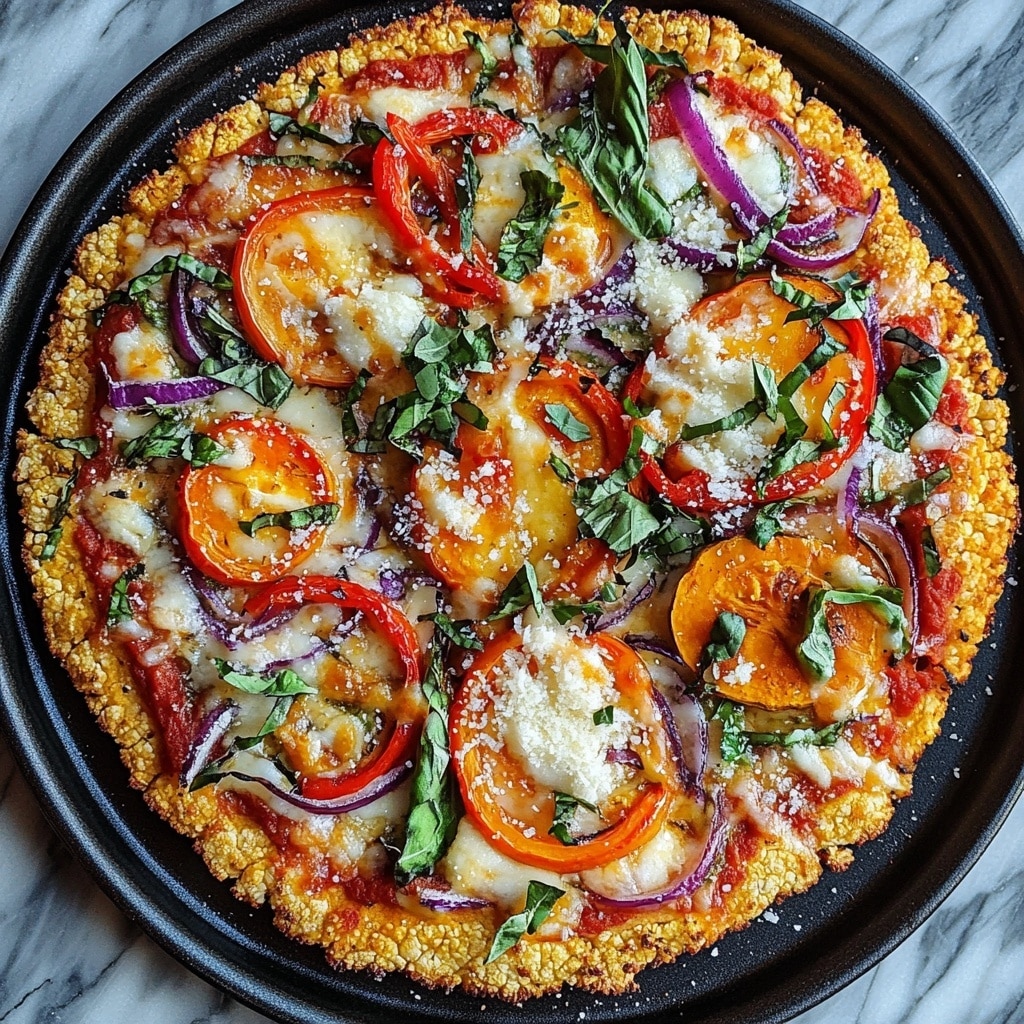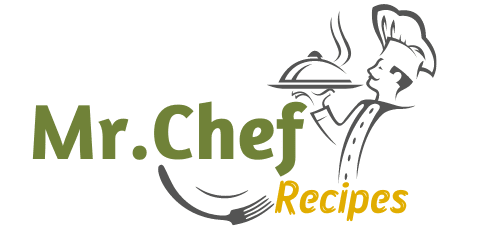If you’re hunting for a way to enjoy pizza without the bloat, gluten-free cauliflower pizza crust might just become your go-to recipe. With more people embracing gluten-free and low-carb diets, cauliflower-based crusts are booming in popularity—and for good reason. Not only do they pack fewer carbs than traditional pizza dough, but they’re also naturally gluten-free, versatile, and loaded with nutrients.

Whether you’re managing celiac disease, cutting carbs, or simply seeking healthier options, this gluten free cauliflower pizza crust recipe has you covered. We’ll walk you through how to make a crust that’s golden, crisp, and flexible enough for all your favorite toppings. Plus, it’s easy to tweak—make it dairy-free, vegan, or keto-friendly with simple swaps.
Table of Contents
Why Choose Cauliflower for Gluten-Free Pizza Crust?
Nutritional Advantages of Cauliflower
Cauliflower isn’t just a trendy substitute—it’s a legit superfood. Packed with fiber, vitamin C, vitamin K, and antioxidants, it supports digestion, boosts your immune system, and even helps fight inflammation. Swapping out traditional white flour with cauliflower helps lower your carb and calorie intake without sacrificing flavor or texture.
One cup of cauliflower contains only about 25 calories and 5 grams of carbs. Compare that to a typical slice of pizza crust made from refined wheat flour, and the health benefits are clear. If you’re tracking your macros or watching your waistline, a gluten free cauliflower pizza crust recipe is a smart choice.
Naturally Gluten-Free & Grain-Free Alternative
For people with gluten sensitivity or celiac disease, cauliflower offers a safe and delicious option. It’s naturally gluten-free and grain-free—so there’s no need to worry about cross-contamination or digestion issues.
Unlike many store-bought gluten-free crusts, which often contain rice flour, potato starch, or gums, a homemade cauliflower pizza crust gluten free recipe skips the fillers and keeps things wholesome. And thanks to cauliflower’s neutral flavor, it plays well with herbs, spices, cheeses, and your choice of toppings.
So why choose cauliflower? Because it’s simple, healthy, flexible, and surprisingly satisfying—no gluten required.
Looking for inspiration? Try this Keto Cauliflower Pizza Crust Recipe.

Gluten-Free Cauliflower Pizza Crust Recipe
- Prep Time: 20 minutes
- Cook Time: 30 minutes
- Total Time: 50 minutes
- Yield: 1 10-inch pizza
- Category: Main Course
- Method: Baked
- Cuisine: American
Description
Enjoy all the satisfaction of pizza without the gluten or guilt. This gluten-free cauliflower pizza crust is crisp, flavorful, and easy to customize for any diet.
Ingredients
- 1 medium head of cauliflower (about 4 cups riced)
- 1 large egg
- 1/2 cup shredded mozzarella cheese
- 1/4 cup grated Parmesan cheese (optional)
- 1/2 tsp Italian seasoning
- 1/4 tsp garlic powder
- Salt and pepper to taste
Instructions
- Preheat oven to 425°F (220°C). Line a baking sheet with parchment paper.
- Break cauliflower into florets and rice in a food processor or grate manually to get about 4 cups.
- Steam or microwave riced cauliflower until tender, then let cool completely.
- Wrap cooled cauliflower in a clean towel and squeeze out as much moisture as possible.
- In a mixing bowl, combine cauliflower, egg, mozzarella, Parmesan (if using), Italian seasoning, garlic powder, salt, and pepper. Mix well until it forms a dough.
- Press the mixture onto the prepared baking sheet, forming a 10-12 inch circle about 1/4 inch thick.
- Bake for 20–25 minutes until golden and firm. Flip halfway for extra crispiness if desired.
- Add desired toppings and bake for an additional 8–10 minutes.
- Let cool for 5–10 minutes before slicing and serving.
Notes
For a dairy-free version, use a flax egg and vegan cheese. Always squeeze cauliflower thoroughly to prevent soggy crusts.
Ingredients You’ll Need
Creating the best gluten-free cauliflower pizza crust recipe starts with just a few clean, simple ingredients. What’s great is that you can easily customize it to fit your dietary needs—whether you’re cutting dairy, going vegan, or sticking to keto.

Essential Ingredients for the Basic Crust
To get that perfect crust that’s crisp on the outside and tender in the middle, here’s what you’ll need:
| Ingredient | Purpose |
|---|---|
| 1 medium head of cauliflower (about 4 cups riced) | Base & structure |
| 1 large egg | Binds ingredients together |
| 1/2 cup shredded mozzarella cheese | Adds moisture and flexibility |
| 1/4 cup grated Parmesan (optional) | Flavor enhancer & crispiness |
| 1/2 tsp Italian seasoning | Flavor boost |
| 1/4 tsp garlic powder | Aromatic kick |
| Salt & pepper to taste | Balance and seasoning |
This combo creates a chewy, golden-brown crust that holds together beautifully when baked properly. The cheese provides both flavor and structure, helping avoid the common issue of a falling-apart crust.
Check out our Vegan Cauliflower Pizza Crust Recipe for a 100% plant-based version.
Dairy-Free & Vegan Substitutes
Want a gluten free dairy free cauliflower pizza crust? You’ve got great options:
| Substitute | Replaces | How to Use |
|---|---|---|
| Flax egg (1 tbsp flaxseed + 3 tbsp water) | Regular egg | Let sit for 5 mins before mixing |
| Vegan mozzarella (e.g., cashew-based) | Dairy cheese | Use same quantity as regular cheese |
| Nutritional yeast | Parmesan | Adds nutty flavor without dairy |
Going dairy-free? Be sure to squeeze the cauliflower extra dry—without cheese acting as a binder, moisture becomes the enemy of structure.
Some folks also like adding a tablespoon of almond flour or coconut flour to soak up extra moisture and firm up the crust naturally. This works particularly well if you’re skipping eggs or cheese.
Now that your shopping list is set, let’s move on to the real action—making that delicious crust from scratch.
Step-by-Step Method for the Perfect Crust
Ready to master the cauliflower pizza crust gluten free recipe? These step-by-step instructions ensure your crust comes out crisp, flavorful, and firm enough to hold your favorite toppings—without falling apart.

Prepping Cauliflower – Ricing & Moisture Removal
Start by breaking your cauliflower into florets. Then:
- Rice the Cauliflower:
Use a food processor to pulse the florets until they resemble rice grains. No processor? A box grater works too. You should end up with about 4 cups of riced cauliflower. - Steam or Microwave:
Microwave the riced cauliflower for 5–7 minutes in a covered bowl or steam it on the stove until tender. Let it cool completely. - Remove Moisture:
This step is critical. Wrap the cooled cauliflower in a clean kitchen towel or cheesecloth and squeeze hard—get out as much liquid as possible. Your goal is a dry, crumbly texture. Wet cauliflower = soggy crust.
Pro Tip: You can prep this ahead and freeze the dry riced cauliflower for future crusts.
Mixing and Forming the Crust
Once dry, combine the cauliflower with the other ingredients in a large mixing bowl.
Base Recipe Recap:
- 4 cups riced, drained cauliflower
- 1 egg (or flax egg for dairy-free)
- 1/2 cup mozzarella
- 1/4 cup Parmesan (or nutritional yeast)
- 1/2 tsp Italian seasoning, 1/4 tsp garlic powder
- Salt & pepper to taste
Mix until fully combined—it should resemble a dough that sticks together easily but isn’t watery.
Form the Crust:
- Line a baking sheet with parchment paper or use a pizza stone for better crisping.
- Spread the “dough” into a 10-12 inch circle, about 1/4 inch thick.
- Use your hands to press and shape. Neaten the edges so it bakes evenly.
Baking Tips for Crispiness
Here’s where the magic happens:
- Prebake the Crust
Bake in a 425°F (220°C) oven for 20–25 minutes until golden brown and firm to the touch. Flip the crust halfway through if you want a super crispy bottom. - Add Toppings & Bake Again
After prebaking, add your sauce and toppings, then return to the oven for another 8–10 minutes. Avoid overloading with sauce or watery veggies, or the crust may soften. - Cool Before Slicing
Let your pizza sit for 5–10 minutes before slicing. This helps the crust hold up.
Bonus Tip: Brushing the edges with olive oil before baking gives a lovely golden finish and more flavor.
Don’t miss our Cauliflower Pizza Crust full walk-through.
Pro Tips & Troubleshooting
Even the most seasoned home cooks can run into issues with cauliflower crust. Whether it’s falling apart, turning soggy, or just lacking that classic pizza feel, this section helps you troubleshoot and tweak your gluten free cauliflower pizza crust recipe to perfection.
Why Your Crust Might Fall Apart
A crumbly or soggy crust is the most common complaint—and it’s usually due to one of three things:
- Too Much Moisture in the Cauliflower
Didn’t squeeze enough liquid? Even a little excess water can ruin the texture. After cooking, wrap the cauliflower in a clean dish towel and squeeze like you mean it. You’ll be surprised how much water comes out. - Missing or Insufficient Binders
Eggs help hold everything together. If you’re going dairy-free or vegan, a flax egg (1 tbsp flaxseed meal + 3 tbsp water) must rest 5–10 minutes to bind properly. A soggy flax egg leads to a loose crust. - Crust Too Thick or Uneven
A thick crust may stay wet in the middle while burning on the outside. Spread the dough evenly at 1/4″ thickness or less.
Extra Tip: Cooling the crust slightly before adding toppings helps it firm up.
Best Flour Alternatives to Add Structure
If you’re after a sturdier, crispier crust, flour alternatives can make all the difference—especially for vegan or egg-free versions of a gluten free dairy free cauliflower pizza crust.
Here are the top choices:
| Flour Option | Benefits | How to Use |
|---|---|---|
| Almond Flour | Low-carb, adds protein & nuttiness | 2–3 tbsp per crust batch |
| Coconut Flour | Absorbs moisture, gluten-free & grain-free | 1–2 tbsp max—very absorbent |
| Arrowroot Powder | Helps bind, adds crispness when baked | 1 tbsp mixed with egg or flax egg |
| Tapioca Starch | Great binder for dairy-free crusts | Use 1–2 tbsp for stretchy texture |
| Psyllium Husk | Excellent fiber, increases elasticity | Use 1 tsp finely ground |
If you’re experimenting with these, start small. It’s easier to add more than to fix a too-dry dough.
Discover great ideas like this Cauliflower Almond Pizza Crust to boost binding power.
Bonus – Best Gluten-Free Pizza Toppings
Once you’ve nailed the crust, the fun really begins—toppings. The right combos can turn your healthy base into a gourmet experience. Whether you’re dairy-free, vegan, or a veggie lover, these topping ideas will make your gluten free cauliflower pizza crust recipe pop with flavor and personality.

Dairy-Free and Vegan Topping Options
For anyone going dairy-free or fully plant-based, these toppings are bold, satisfying, and loaded with nutrition.
Top Vegan & Dairy-Free Choices:
| Topping | Why It Works |
|---|---|
| Cashew cheese | Creamy, rich, and easy to make at home |
| Vegan mozzarella | Melts beautifully without dairy |
| Marinated tofu cubes | Adds protein and texture |
| Sautéed mushrooms | Umami bomb—goes well with herbs and garlic |
| Sun-dried tomatoes | Sweet, tangy, and packed with flavor |
| Vegan pesto | Swap out cheese with nutritional yeast and almonds |
| Olives & artichoke hearts | Briny and Mediterranean-inspired |
These pair perfectly with a thin layer of marinara or roasted red pepper sauce.
Creative Ideas for Veggie Lovers
If you’re not strictly vegan, but you love piling on veggies, cauliflower crust is the ultimate canvas. Its neutral base lets fresh ingredients shine.
Fresh & Flavorful Veggie Combos:
- Zucchini + Roasted Red Peppers + Vegan Feta
Light, tangy, and Mediterranean-inspired. - Spinach + Mushrooms + Caramelized Onions
Earthy and rich, especially with garlic oil drizzle. - Butternut Squash + Arugula + Goat Cheese
Sweet, peppery, and creamy in every bite. - Cherry Tomatoes + Basil + Balsamic Glaze
Like a caprese pizza, minus the gluten. - Jalapeño + Corn + Black Beans
For a spicy Southwest twist.
Pro Tip: Always roast or sauté high-moisture veggies first to prevent a soggy crust.
Storage, Freezing, and Meal Prep Tips
Want to save time and reduce food waste? This section shows how to prep your gluten free cauliflower pizza crust recipe in advance, store it right, and reheat it without ruining the crispiness. Whether you’re meal-prepping for the week or stashing a few crusts in the freezer, here’s how to do it like a pro.
How to Freeze Your Cauliflower Pizza Crust
Freezing your crust means pizza night is always just a few minutes away.
Option 1: Freeze the Crust After Baking (Best Option)
- Prepare and bake the crust completely.
- Let it cool fully on a wire rack.
- Place a piece of parchment between multiple crusts (if stacking).
- Wrap tightly in plastic wrap and store in a ziplock freezer bag.
- Label with the date. It’ll stay fresh for up to 3 months.
Option 2: Freeze the Crust Raw (Pre-Formed but Unbaked)
- Prepare the crust dough and shape it on parchment paper.
- Freeze on a baking sheet for 1–2 hours until firm.
- Transfer to a freezer bag or airtight container.
- Bake from frozen at 425°F for 25–30 minutes.
Note: Fully baked crusts hold together better and require less fuss during reheating.
Reheating Without Making It Soggy
Reheating cauliflower crust can go wrong fast if you’re not careful. Avoid the microwave at all costs—it turns your beautiful crust into mush.
Best Reheating Methods:
| Method | Steps |
|---|---|
| Oven (best option) | Preheat to 375°F. Bake crust or full pizza for 8–10 min. |
| Skillet (quick & crisp) | Heat a nonstick pan, add crust, and cover for 5 min. |
| Air Fryer | 375°F for 5–7 min for extra crispy results |
Tip: Place the crust directly on the oven rack (or a pizza screen) for best airflow and crispiness.
Discover great ideas like our full Cauliflower Pizza Crust Guide
Nutritional & Dietary Considerations
If you’re following a specific diet—whether it’s keto, low-carb, paleo, or just gluten-free—you’re probably wondering how this gluten free cauliflower pizza crust recipe stacks up nutritionally. Good news: it checks a lot of the right boxes.
Is This Cauliflower Crust Keto-Friendly?
Yes! When made with the basic ingredients (cauliflower, eggs, cheese, and seasonings), this crust is not only gluten-free—it’s also naturally low in carbs and high in fat, making it an excellent fit for keto.
Typical Macros per Serving (1/4 of 10-inch crust):
| Nutrient | Amount |
|---|---|
| Calories | 120–150 kcal |
| Protein | 7–9 g |
| Fat | 8–10 g |
| Carbohydrates | 5–7 g net carbs |
| Fiber | 2–3 g |
You can reduce the carb count further by omitting or substituting cheese and opting for dairy-free keto alternatives.
Pro Tip: Avoid tomato sauces with added sugar to keep your total carb count keto-compliant.
Calorie Count and Macros Overview
Whether you’re counting macros or just trying to make better food choices, this cauliflower crust is a smart option. Here’s why:
- Lower in calories than traditional crust
- Higher in fiber and micronutrients
- Better for blood sugar regulation (thanks to fewer refined carbs)
- Totally customizable based on your diet
You can also add more healthy fats (like avocado oil or olive oil) or plant-based proteins (like tempeh or chickpeas) depending on your meal goals.
Conclusion
So there you have it—your complete guide to mastering the gluten free cauliflower pizza crust recipe that checks every box: healthy, delicious, crispy, and customizable. Whether you’re avoiding gluten, watching your carbs, or simply experimenting with clean eating, this cauliflower-based crust brings flexibility and flavor to your table.
What makes it stand out? It’s adaptable for keto, dairy-free, and vegan diets. You can prep it ahead, freeze it, or bake it fresh—and it’s ready to hold all your favorite toppings without falling apart. Plus, the natural nutrients in cauliflower make it a better-for-you option than traditional wheat crust.
Discover daily inspiration by following Mr.Chef Recipes on Pinterest — and cook along with our awesome community!
FAQs About Gluten-Free Cauliflower Pizza Crust
Can I freeze the crust?
Yes, and it’s one of the best parts of this recipe! You can freeze either the baked crust or the raw, shaped dough. For best results, bake the crust first, cool it completely, then freeze it with parchment paper between layers. It reheats beautifully in the oven or air fryer.
Pro Tip: Always use parchment to prevent sticking during reheating.
Is it keto-friendly as well?
Absolutely. This crust is naturally low in carbs and high in fiber and healthy fats, especially if you skip starchy flour add-ins. A basic cauliflower pizza crust gluten free recipe made with cheese and egg fits perfectly into a keto diet.
Watch out for high-carb sauces or toppings like pineapple and sweet BBQ.
What is the best gluten free cauliflower pizza crust recipe?
You’re reading it! This recipe strikes the perfect balance between crispiness, flavor, and structural integrity. It’s flexible, holds toppings well, and can be made dairy-free or vegan with a few simple swaps. Don’t forget to pre-bake the crust to golden perfection before adding toppings.
How to make gluten free dairy free cauliflower pizza crust?
To make it dairy-free, substitute:
Flax egg for a regular egg
Vegan mozzarella for dairy cheese
Nutritional yeast in place of Parmesan
Also consider adding a bit of arrowroot or almond flour to help with binding.
Tip: Squeeze every drop of moisture from the cauliflower to keep your crust from falling apart.
What are the healthiest toppings for cauliflower pizza crust?
Here are some clean, healthy, and delicious ideas:
Fresh spinach and mushrooms
Grilled zucchini and red bell peppers
Vegan pesto and arugula
Cashew cheese with roasted tomatoes
Tofu crumbles and olives
Avoid overly greasy or processed toppings to keep the health factor high.
How do I keep my cauliflower crust from falling apart?
This is a common concern! To make your crust sturdy:
Squeeze the cauliflower dry—no shortcuts
Use a binding agent like egg or flax egg
Don’t make the crust too thick
Bake it thoroughly before adding toppings
Let it cool slightly before slicing
